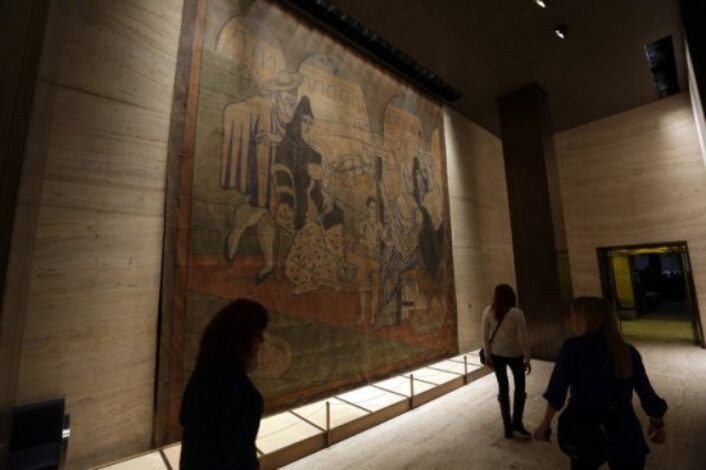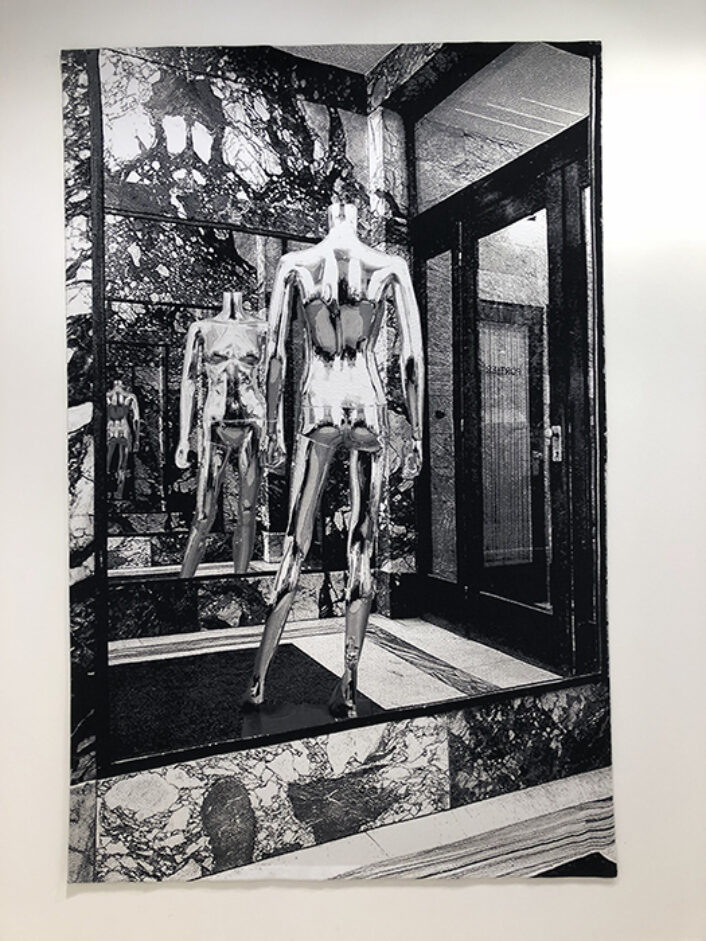Culture
An unexpected update on tapestry
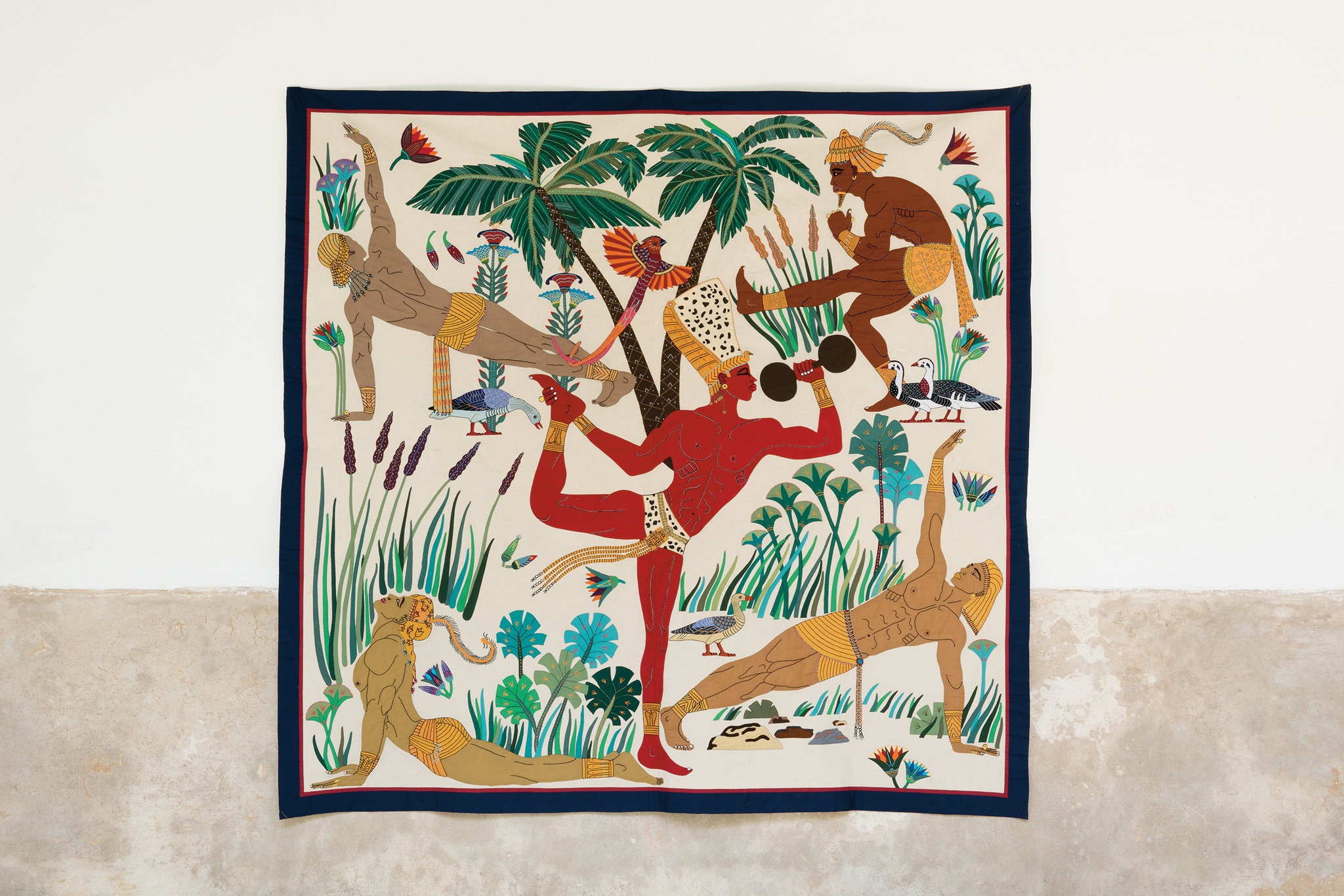
“Les Dieux du Nil” was inspired by a 1978 Jean-Paul Goude image of Grace Jones posing as a dancer while holding a microphone.
Image courtesy of: The New York Times, photographed by: Alan Keohane
Louis Barthelemy has been in the fashion industry for a long time, he developed prints and illustrations for Gucci and Chole before joining Salvatore Ferragamo. The French designer is a voracious traveler and recently decided to split his time between Paris and Marrakesh.
When he was a new expat in Marrakesh, Barthelemy liked to get lost in the souks while searching for tangible inspiration. On a side trip to Tangier, he found “Mere et Fils”, a 2014 book of photography by Dennis Dailleux. The 61-year-old French artist lived in Egypt for many years and during that time, he photographed young, Egyptian, shirtless, male bodybuilders with their traditionally-garbed mothers. Dailleux was so intrigued with the images that he decided to move to Cairo.
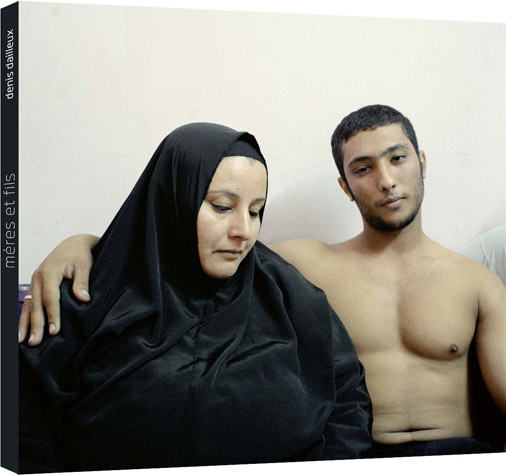
The book- “Mere et Fils”, 2014.
Image courtesy of: Denis Dailleux
One afternoon Barthelemy visited a little stall at the Tentmakers’ Market. It was here that he met Tarek Abdelhay Hafez Abouelenin. Abouelenin was hand-making a khayamiya, a decorative textile used to decorate tents at weddings, funerals, and celebrations. Due to the meticulous and time-consuming nature of this art form, sadly it is a dying art.
Amazed with the details, Barthelemy asked Abouelenin if he wanted to collaborate on a different sort of khayamiyas, ones which veered away from traditional motifs.
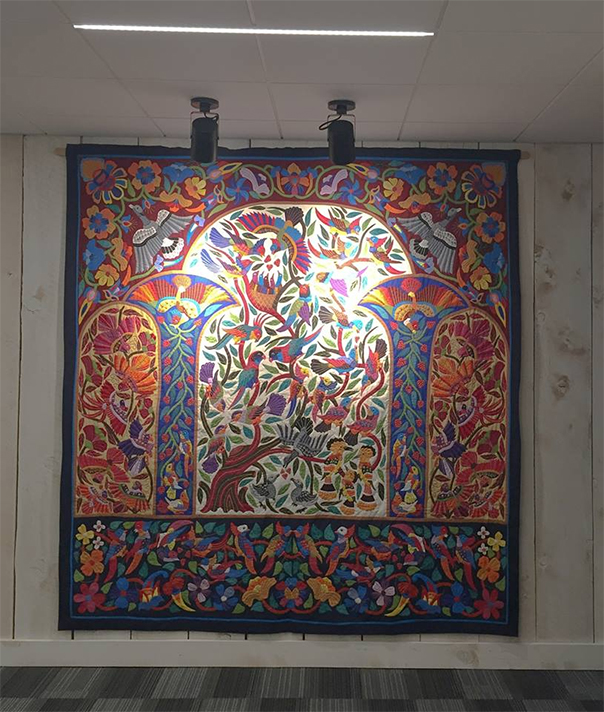
Tarek Abdelhay Hafez Abouelenin’s beautiful tapestry!
Abouelenin is a member of the Tentmakers of Cairo and his is one of 23 shops on a single street in Cairo. This is the only place in Egypt where this exact art is practiced. These monumental creations are inspired by decorations from the Ottoman Empire. The mosque tile motifs and designs were found on 2nd-century tombs.
Image courtesy of: International Folk Arts Market
The progressive drawings would challenge Islamic taboo against realistic and homoeroticism representations. Barthelemy said, “I drew a fantasy- a naive and sensual scene of an imaginary gym on the Nile.” Then, the men decided on a color scheme of cornflower blue and seaweed green. Once everything was factored in, Abouelenin began stitching and the end-result was a 70-inch-by-70-inch tapestry depicting muscular Egyptian men exercising amongst palm trees and native birds.

Another Barthelemy tapestry, one of six new designs that are currently on display at a famous restaurant in Beirut, “Tarek”.
Image courtesy of: Souk el Tawlet
Luckily for everyone, Barthelemy is not solely designing prints for Ferragamo anymore!
Beyond the sheer beauty of these masterpieces, making khayamiyas is a dying art. Reviving a national treasure is hard to do at a time when everyone expects immediate gratification. Once there is a clear understanding of the painstakingly hard work that goes into making khayamiyas, it is bound to become clear that this is an art form and not a craft!
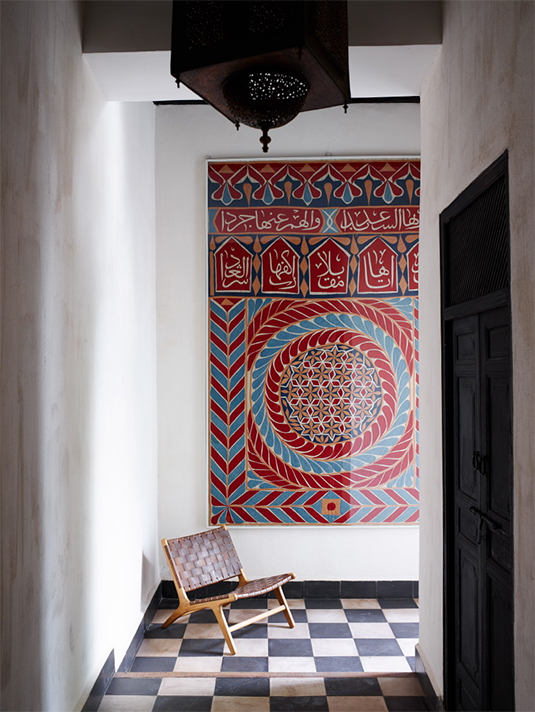
The beautiful Marrakech hotel where “Les Dieux du Nil” is hanging, Riad Mena.
Image courtesy of: Riad Mena & Beyond
Barthelemy remains cognizant of the fact that his erotic tapestries might touch a nerve, especially in Islamic countries. He says, “I’m very aware of the fact that in Islamic countries, women are covered but men are allowed to be quite exhibitionist. This has become even more exaggerated on social media and is something I want to explore.”
Please do!
